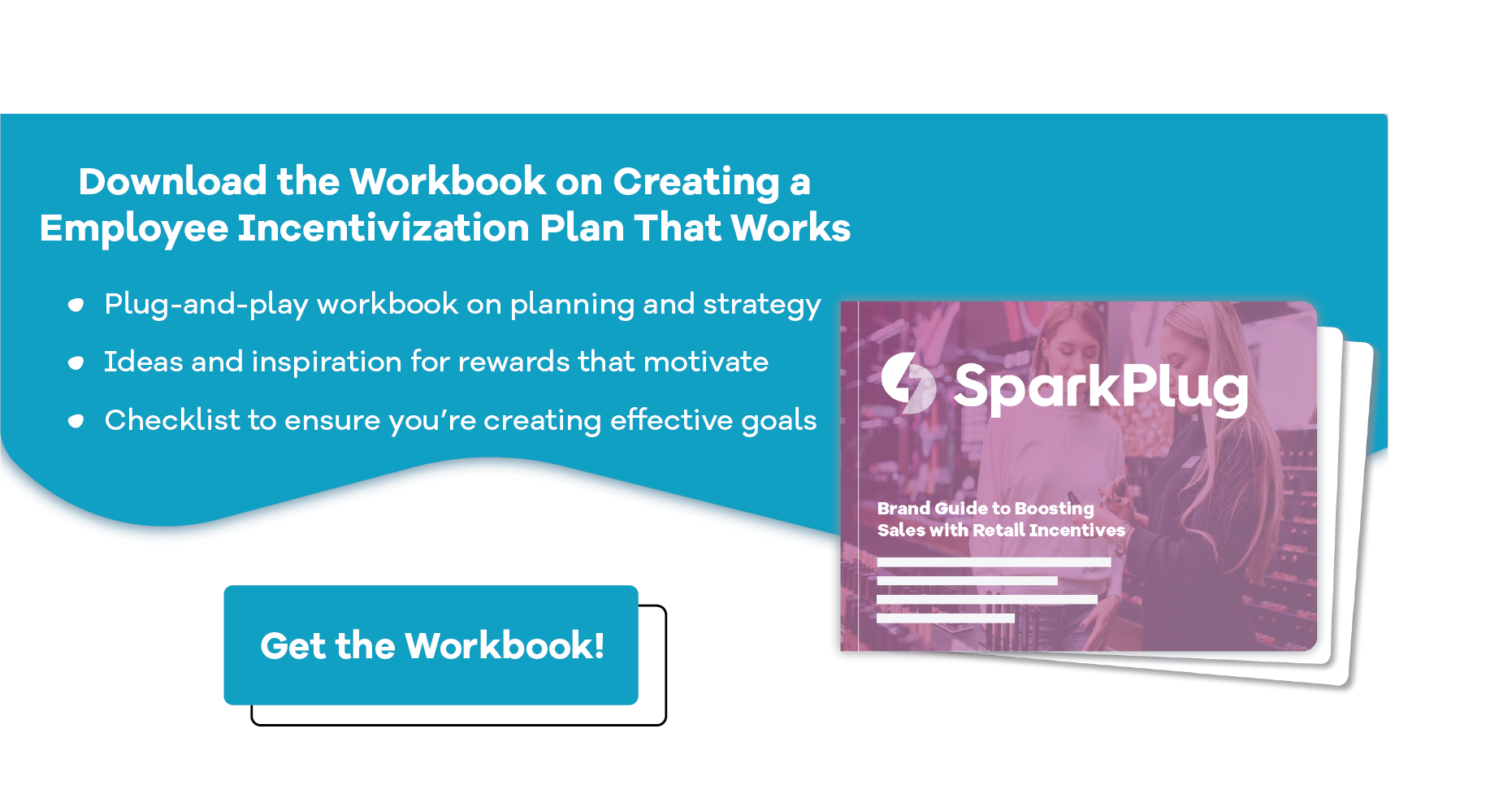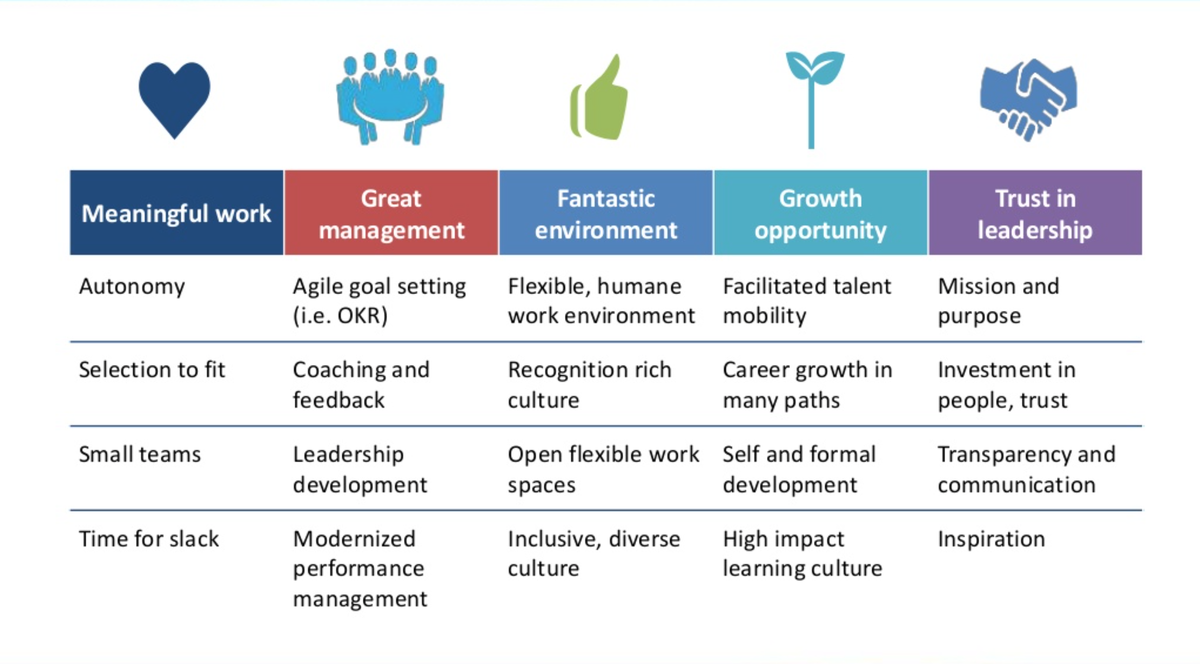Incentivization programs within the retail industry are huge, as shown by a study performed by the Incentive Federation (obviously that's a thing) which found that American businesses are spending $90 billion each year on employee performance incentives.
That seems like a lot of money, and it is, but the great thing about incentivization is that the returns are worth it. In fact, we’re here to tell you that incentives are more than worthwhile—they’re necessary.
Incentivization for Retailers
Incentivization programs are formal initiatives by businesses that utilize prizes, recognition, or other motivators as rewards for excellent performance. Managers and business owners may implement incentivization in numerous ways in the workplace, customized for their unique products, culture, and brand.
For example, employee incentive examples include:
- An office party
- Recognition in the form of a plaque or trophy
- Monetary prizes such as bonuses or gift cards
- Free product
- Sales competitions with prizes for first, second, and third place (or the winning team)

Is It Effective?
Sure, incentivization sounds good, but that’s not all—there’s a reason we believe so strongly that it’s necessary for your employees to reach their full potential. A great deal of research has been conducted to determine the true value of incentivization programs in the workplace, and the findings are indeed eye-opening.
The fact that people work more effectively with incentives on the line is no startling discovery, but it may be more shocking to know that a a mere 8% of surveyed employees indicated that they would have met their sales goals without the presence of an incentives program.
This statistic comes courtesy of the Society of Incentive and Travel Executives (SITE), which conducted a landmark study to determine how incentives affect the workplace.
More recently, SITE funded another study which discovered that incentive programs developed for individual employees improved performance by an average of 22%. Incentivization strategies emphasizing teamwork were even more effective, increasing performance by a substantial 44%. In the world of modern retail, a 22% or 44% boost to your bottom line can be the difference between closing your doors or expanding into additional locations.

How Incentivization Works
Long story short: incentivizing your employees can be wildly effective, making the difference between an apathetic frontline and a highly-productive sales team eagerly striving to achieve new heights.
Here’s why.
1. It motivates your employees
Naturally, we’re going to work harder when we have something desirable awaiting us at the end. Prizes, rewards, and gamification give employees a reason to achieve more and challenge themselves. A bit of friendly competition tends to be a particularly powerful motivator.
2. It’s fun
Setting goals for employees and offering even simple rewards when these goals are accomplished creates an immediate sense of urgency, excitement, and company buy-in. This energy may prompt new connections and instances of teamwork you haven’t seen before, or it may reignite passion in employees who have lost their sense of purpose at work.
Unengaged employees not only exhibit poor performance themselves, but they also tend to bring down the productivity of those around them. Ensuring every member of your team is present, accountable, and engaged should be a top priority.
3. It provides employees with insight
By incentivizing improvements in the workplace, you automatically create an opportunity for employees to track their performance. When a member of your sales staff continuously falls flat in competitions or fails to attain a sought-after prize, they are more often led to seek guidance and evaluate their own performance. Helping your employees to understand how their daily efforts impact the growth of the business leads to happier employees. And happier employees sell more product, provide a superior customer experience, and exhibit up to 60% less absenteeism.

4. It increases performance to new heights
Without incentives, sales personnel may have no reason to push themselves harder at work or improve upon an average performance. Achieving more than what they thought they were capable of can result in a huge confidence boost, increasing the chances of long-term success.
5. It urges your employees to collaborate
While individual incentives foster healthy competition within your store, team-based goals can strengthen workplace relationships by encouraging employees to seek new ways to succeed as a group. Consciously or subconsciously, every customer that walks through your doors is keenly attuned to your company culture. It affects not only how much they buy, but how frequently they return and how likely they are to recommend you to their peers. Cultivating a strong and collegial company culture where employees clearly love showing up to work each day is invaluable to your businesses goals.
Creating an Incentive Program in Retail
The majority of research and online guidance around employee incentivization tactics are typically within the context of “traditional” business settings—think desk-based employees and office sales staff who rely on emails and cold calls. So, where do retail employees come in?
Within retail, your sales (and thus, success) are driven completely by your frontline employees--the sales personnel who represent your business day in and day out. While they may not work at a desk like a traditional sales force, incentivization techniques and gamification will work similarly to further engage these valuable team members and boost sales.
Incentivization can help your employees to understand exactly how their daily efforts contribute to the overall success of the company, how they can help reach company goals, and where they can improve in order to grow within the company.
David Goodwin, the Principal of the Retail Advocacy Group, tells a story about a client who was seeing poor results from his retail chain.
After analysis, Goodwin discovered that the retail store managers were never given the financial results of their branch—as a result, they thought they were doing a great job without having any idea of their shortcomings!
When this information was provided to them and the manager was able to create measurable goals for their store, the sales results turned around.
At the core of incentivization is a valuable opportunity to set a baseline and provide visual, concrete data to employees about their performance and their contribution to the business as a whole.
Often, retail employees aren’t privy to this kind of information, despite the fact that they are the driving force behind company success. Incentivizing these retail workers sets a motivating baseline and can push the success of a retailer to unexpected heights.

How to Get Started
It’s one thing to incentivize your employees. It’s another thing entirely to incentivize them effectively.
1. Utilize technology
While it’s certainly possible to begin working toward new goals by creating goals and incentive tiers, then manually maintaining the results, you’ll save time and improve the quality of your incentivization by utilizing software and programs designed to take your incentivization to the next level.
These programs are particularly effective when accessible by all members of your team—the ability to participate and visualize progress is a huge motivator for employees.
2. Get SMART
When setting goals, use the popular acronym developed by Peter Drucker—SMART. To develop a goal that’s clear and attainable, ensure that the goal is Specific, Measurable, Achievable, Relevant, and Time-bound.
The concepts of measurability and timeframe are particularly important when it comes to incentivizing opportunities—measurable goals mean that participants can watch data (and their success) unfold in real time, and determining timeframe ushers in a sense of urgency.
Once the goal is set, utilize incentives to achieve the goal.
3. Play some games
Gamification, the idea of adding game-like qualities (like points or a leaderboard) to other tasks (such as the day-to-day sales grind), is a particularly motivating form of incentivization which will bring the best out of each participant.
Tournament-style or even head-to-head competitions can drive numbers and ignite a newfound energy in the workplace—even better if a reward awaits the winners or most improved participants.
4. Set reward tiers for the most-improved employees, too
It can be discouraging for less productive employees to feel like they have no chance at reaching a goal or winning a reward, particularly if it’s the same top performers who are coming away successful every time.
To ensure that lower performers are included in on the fun, offer specific incentives for employees who improve their performance the most within a given period of time. Utilizing metrics besides net sales can also be a good way to level the playing field. Numbers like average ticket price or units per transaction can help your employees focus on upselling and cross selling while ensuring everyone has a fair shot at winning.
5. Download our workbook
For more help implementing these ideas, check out our accompanying workbook, full of examples to help you succeed as you set goals and customize incentives for your employees.
.png?width=56&height=56&name=Jake-01%20(1).png)




